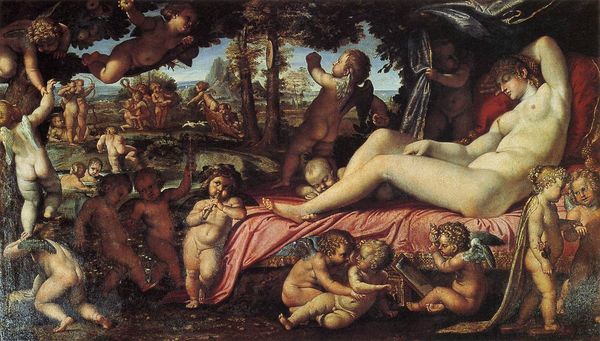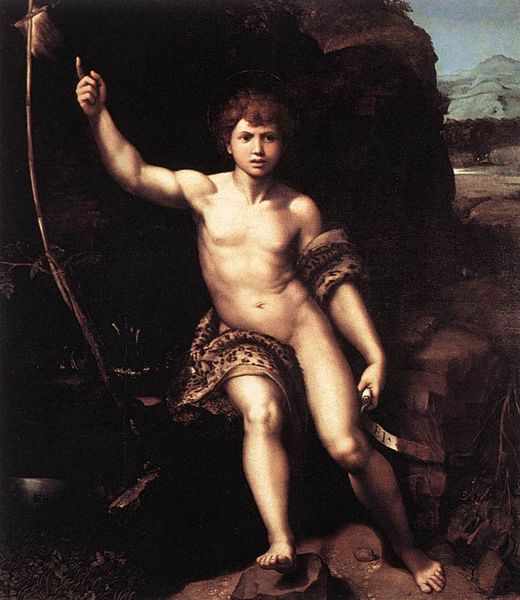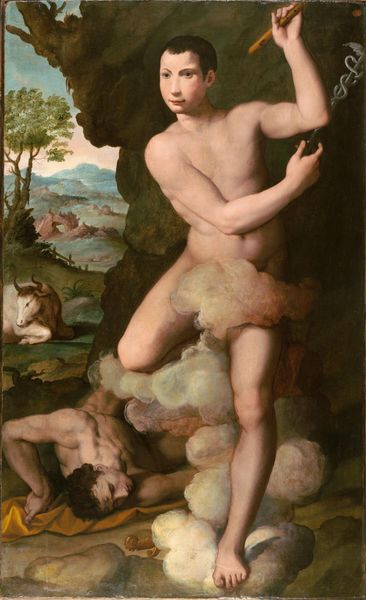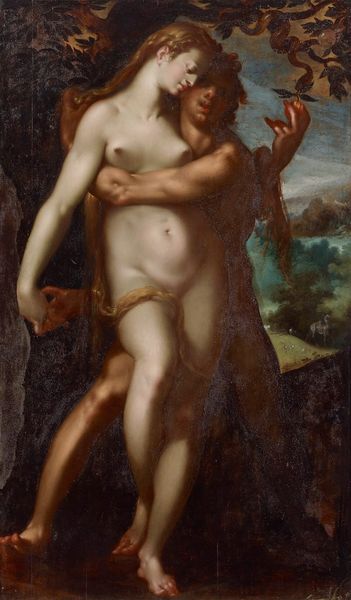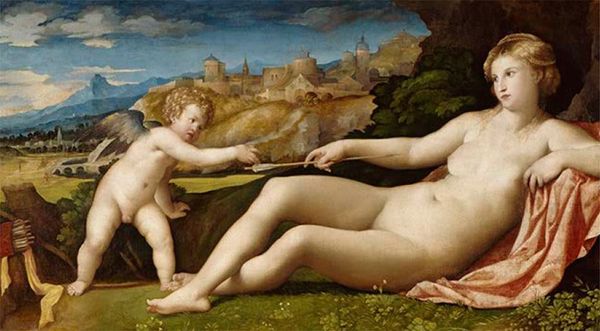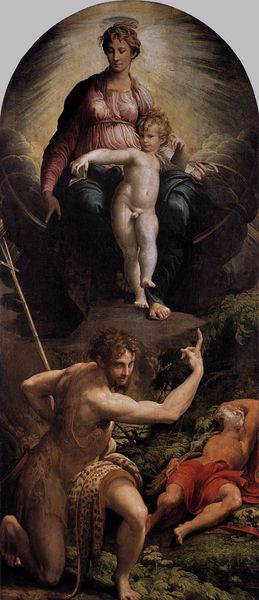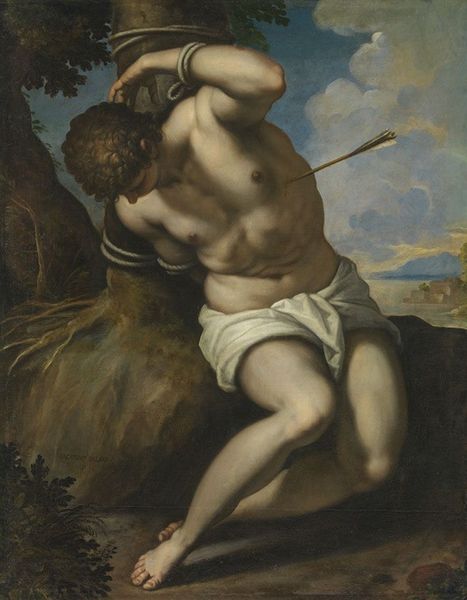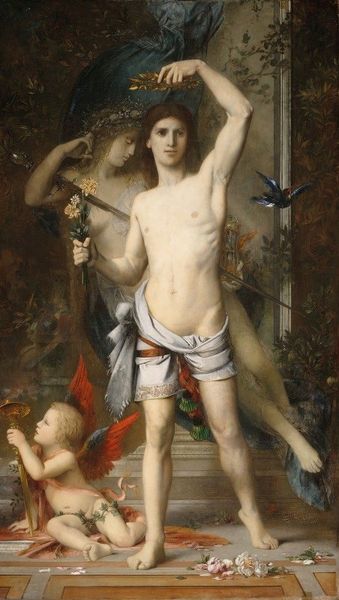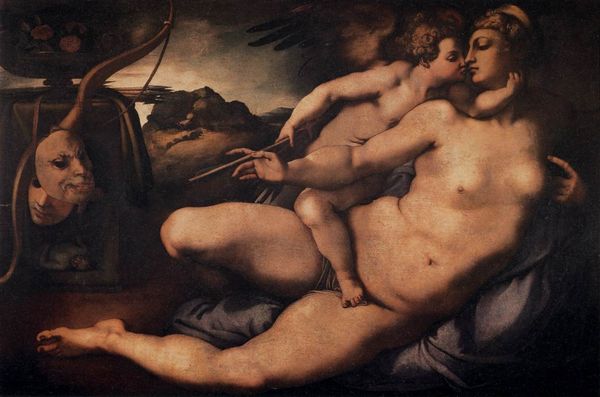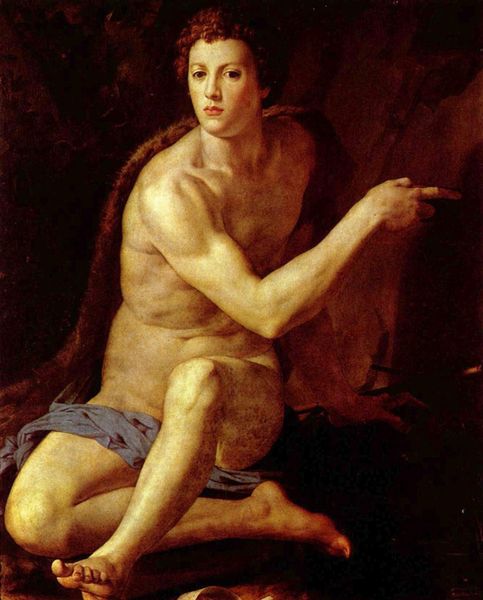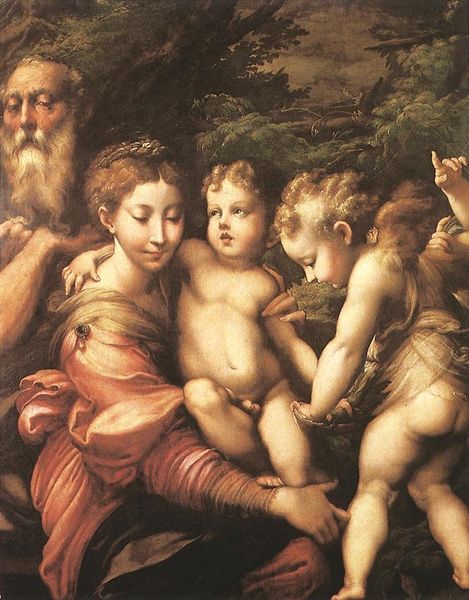
painting, oil-paint
#
portrait
#
allegory
#
painting
#
oil-paint
#
landscape
#
figuration
#
oil painting
#
cupid
#
mythology
#
painting painterly
#
history-painting
#
italian-renaissance
Copyright: Public domain
Curator: Il Sodoma's "Cupid in a Landscape," painted around 1510 using oil paint, presents a fascinating confluence of classical mythology and Renaissance aesthetics. Editor: The immediate impression is one of vulnerability amidst a picturesque setting. There's a cherubic innocence, yet the bow hints at the potent disruptions of love. Curator: Note how the composition directs our eye. The idealized Cupid, the verdant landscape, the dramatic lighting—each element carefully arranged to convey an allegorical message. It’s very classical. Editor: But whose love are we talking about here? Cupid is, classically, a disruptor of hierarchies, and I'm interested in the possibilities opened up when we refuse to think of 'love' in a restrictive, heteronormative sense. Sodoma himself was, by all accounts, queer. How did this identity play out in his artistic choices? Curator: You raise a fascinating point about Sodoma's personal identity. Analyzing the artist's biography through the painting adds a layer of interpretive depth. But I see more immediate formal concerns; the meticulous details, the texture, the interplay of shadows defining the form—it reveals Sodoma's profound understanding of anatomy and perspective. Editor: Yes, there is immense skill at play here, I just wonder if we give it its due. Is this simply skillful reproduction or can it offer insight into contemporary discussions surrounding eroticism, queer identity and agency? How might this cupid rewrite ancient definitions to reflect an embodied understanding? Curator: By looking through the lens of identity, one risks ascribing motivations or readings unsupported by visible evidence. However, your challenge to seek wider meaning offers fresh perspectives and encourages new readings. Editor: And examining artistic output divorced from its material conditions feels like only half the story. Thank you for sharing your perspectives. Curator: Indeed, understanding the artist’s choices necessitates approaching it with curiosity, with many lenses, both formal and historical.
Comments
No comments
Be the first to comment and join the conversation on the ultimate creative platform.
